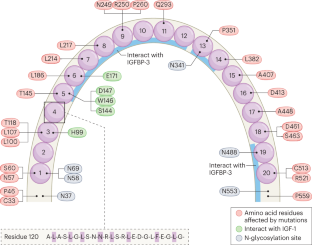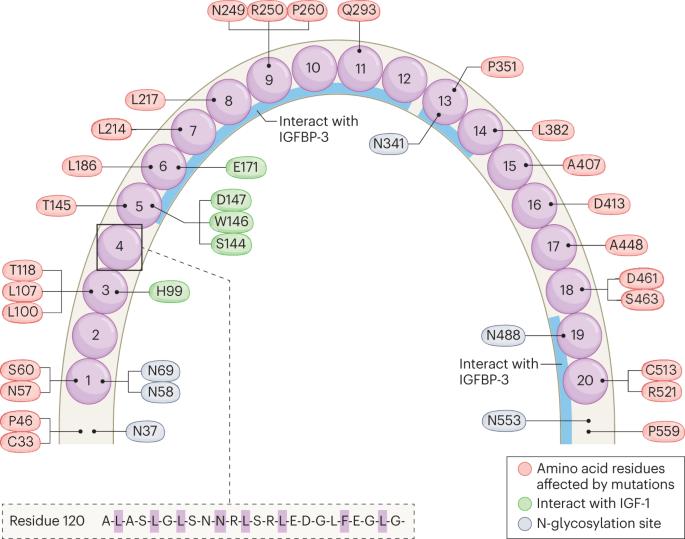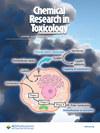胰岛素样生长因子酸性亚基的内分泌和细胞生理学及病理学
IF 3.7
3区 医学
Q2 CHEMISTRY, MEDICINAL
引用次数: 0
摘要
胰岛素样生长因子(IGF)结合蛋白(IGFBP)复合物的可酸亚基(ALS)在调节 IGF-1 和 IGF-2 的内分泌转运和生物利用率方面起着至关重要的作用。因此,ALS 对出生后的生长和新陈代谢有相当大的影响。ALS 是一种富含亮氨酸的糖蛋白,当 IGFBP-3 或 IGFBP-5 被 IGF-1 或 IGF-2 占据时,它会与 IGFBP-3 或 IGFBP-5 形成高亲和力的三元复合物。这些复合物构成了一个稳定的循环 IGF 储存库,阻断了未结合 IGF 的潜在低血糖活性。ALS 主要由肝细胞合成,在非肝组织中的表达量较低。ALS 的合成受生长激素的强烈诱导,受 IL-1β 的抑制,因此有可能成为生长激素分泌和/或活性以及炎症的标志物。人类的 IGFALS 突变和小鼠的 Igfals 缺失会导致适度的生长迟缓和青春期延迟,并伴有骨生成减少和脂肪生成增强。在肝细胞癌中,IGFALS 被描述为一种肿瘤抑制因子;然而,它对其他癌症的贡献还没有得到很好的描述。本综述探讨了 ALS 的内分泌生理学和病理学,讨论了表明 ALS 新出现的细胞作用的最新细胞和蛋白质组学研究,并概述了其在其他疾病状态中的参与情况。本文章由计算机程序翻译,如有差异,请以英文原文为准。


Endocrine and cellular physiology and pathology of the insulin-like growth factor acid-labile subunit
The acid-labile subunit (ALS) of the insulin-like growth factor (IGF) binding protein (IGFBP) complex, encoded in humans by IGFALS, has a vital role in regulating the endocrine transport and bioavailability of IGF-1 and IGF-2. Accordingly, ALS has a considerable influence on postnatal growth and metabolism. ALS is a leucine-rich glycoprotein that forms high-affinity ternary complexes with IGFBP-3 or IGFBP-5 when they are occupied by either IGF-1 or IGF-2. These complexes constitute a stable reservoir of circulating IGFs, blocking the potentially hypoglycaemic activity of unbound IGFs. ALS is primarily synthesized by hepatocytes and its expression is lower in non-hepatic tissues. ALS synthesis is strongly induced by growth hormone and suppressed by IL-1β, thus potentially serving as a marker of growth hormone secretion and/or activity and of inflammation. IGFALS mutations in humans and Igfals deletion in mice cause modest growth retardation and pubertal delay, accompanied by decreased osteogenesis and enhanced adipogenesis. In hepatocellular carcinoma, IGFALS is described as a tumour suppressor; however, its contribution to other cancers is not well delineated. This Review addresses the endocrine physiology and pathology of ALS, discusses the latest cell and proteomic studies that suggest emerging cellular roles for ALS and outlines its involvement in other disease states. The acid-labile subunit (ALS) of the insulin-like growth factor (IGF) binding protein complex regulates the endocrine transport and bioavailability of IGF-1 and IGF-2 and therefore influences postnatal growth and metabolism. This Review addresses the endocrine physiology and pathology of ALS, discusses the emerging cellular roles for ALS and outlines its involvement in disease states.
求助全文
通过发布文献求助,成功后即可免费获取论文全文。
去求助
来源期刊
CiteScore
7.90
自引率
7.30%
发文量
215
审稿时长
3.5 months
期刊介绍:
Chemical Research in Toxicology publishes Articles, Rapid Reports, Chemical Profiles, Reviews, Perspectives, Letters to the Editor, and ToxWatch on a wide range of topics in Toxicology that inform a chemical and molecular understanding and capacity to predict biological outcomes on the basis of structures and processes. The overarching goal of activities reported in the Journal are to provide knowledge and innovative approaches needed to promote intelligent solutions for human safety and ecosystem preservation. The journal emphasizes insight concerning mechanisms of toxicity over phenomenological observations. It upholds rigorous chemical, physical and mathematical standards for characterization and application of modern techniques.

 求助内容:
求助内容: 应助结果提醒方式:
应助结果提醒方式:


